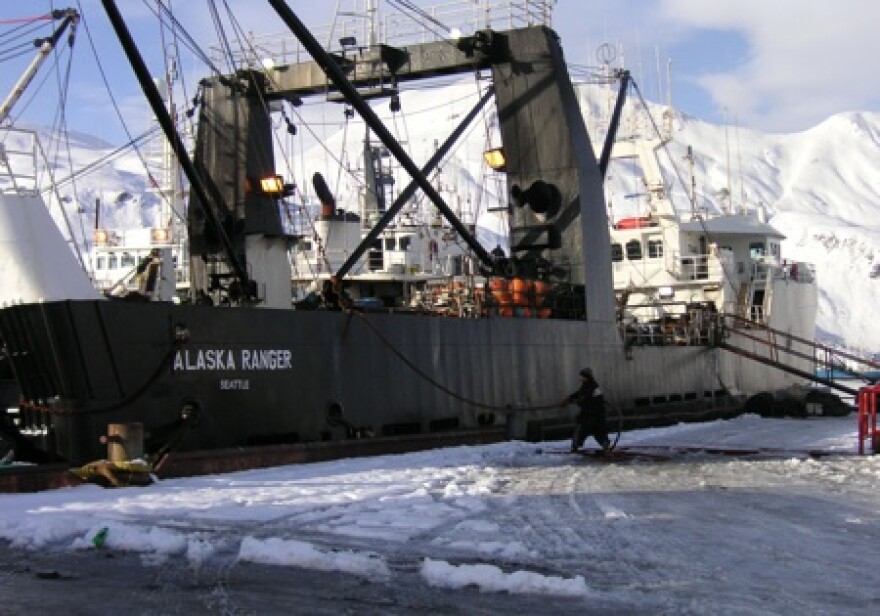The US Coast Guard has released its 192-page report on the sinking of the fishing trawler Alaska Ranger in March of 2008. The 189-foot fish processing vessel took on water and sank about 130 miles west of Dutch Harbor, in Alaska's Aleutian Islands. Forty seven people were on board: all but five were rescued.
Near as could be determined, the Alaska Ranger sank when a leak around the rudder flooded into the engine room and other compartments, causing the boat to sink in about two hours.
The report, by the Coast Guard's marine board of investigations, found fault all around.
A release from the Coast Guard in Seattle points to the vessel's owners:
The Board concluded that the Fishing Company of Alaska failed to properly maintain the structural condition of the Alaska Ranger.
The report details shoddy upkeep, including structural members that repeatedly cracked and were repaired without trying to figure out why they kept breaking.
Kalee Thompson at Popular Mechanics has been following the story and notes that ...
... the Alaska Ranger's compartments were not watertight. Holes had been drilled in the bulkheads. Watertight doors didn't seal properly. The dogs on some doors could only be secured with a sledgehammer, and it was common practice to keep the doors hooked open even when the ship was out at sea in rough weather.
The report also criticizes the Coast Guard. It found a Coast Guard inspection of the ill-fated vessel less than four months before the sinking failed to follow standards.
It also found that Coast Guard inspectors were reluctant to enforce safety regulations for fear the vessel owners would find the inspections too inconvenient or the repairs too costly.
The report makes 37 recommendations that would tighten safety standards, make inspections more stringent and give teeth to now-voluntary safety measures.





